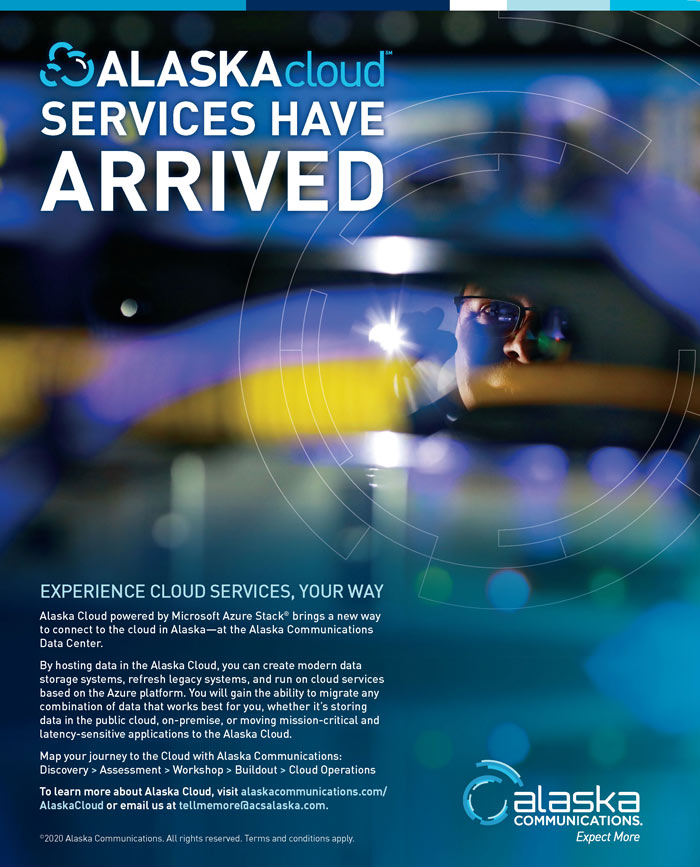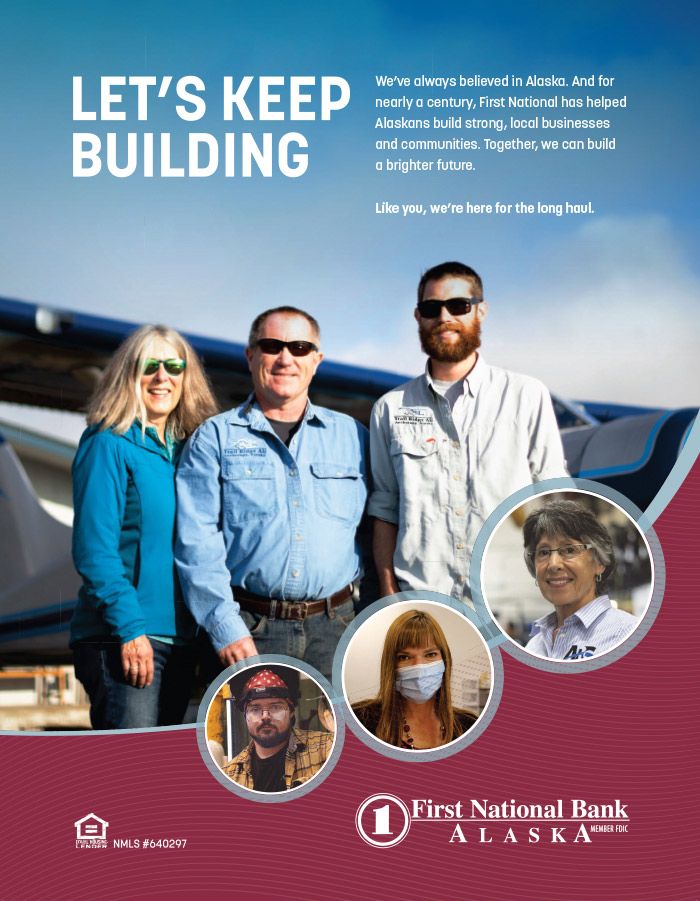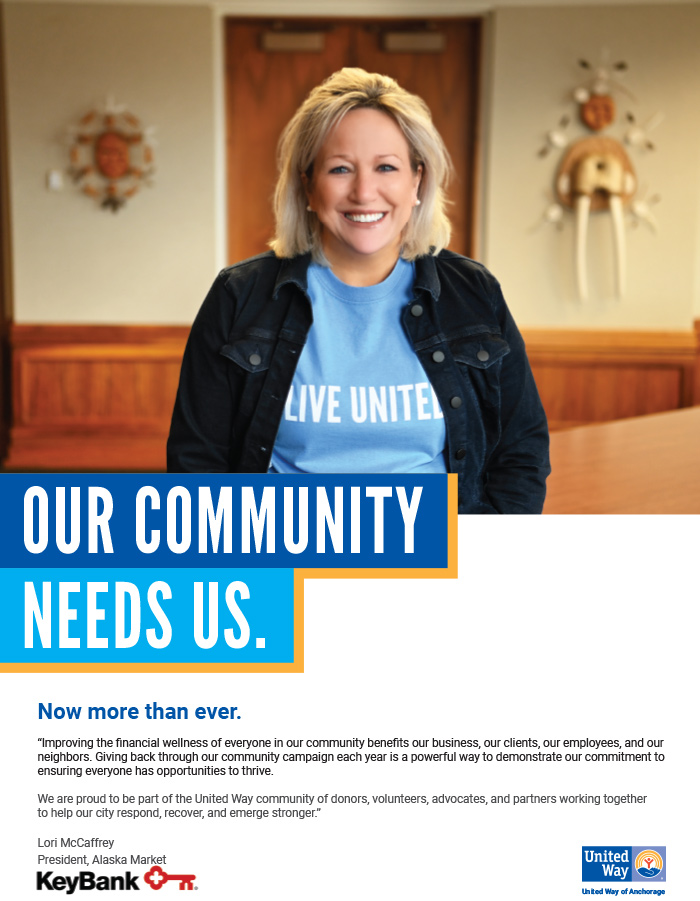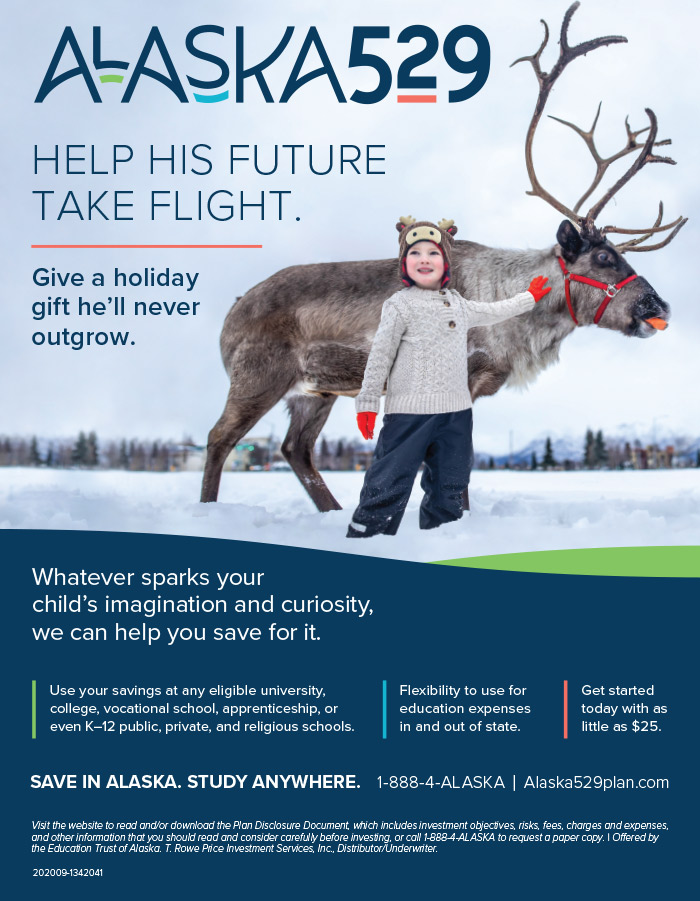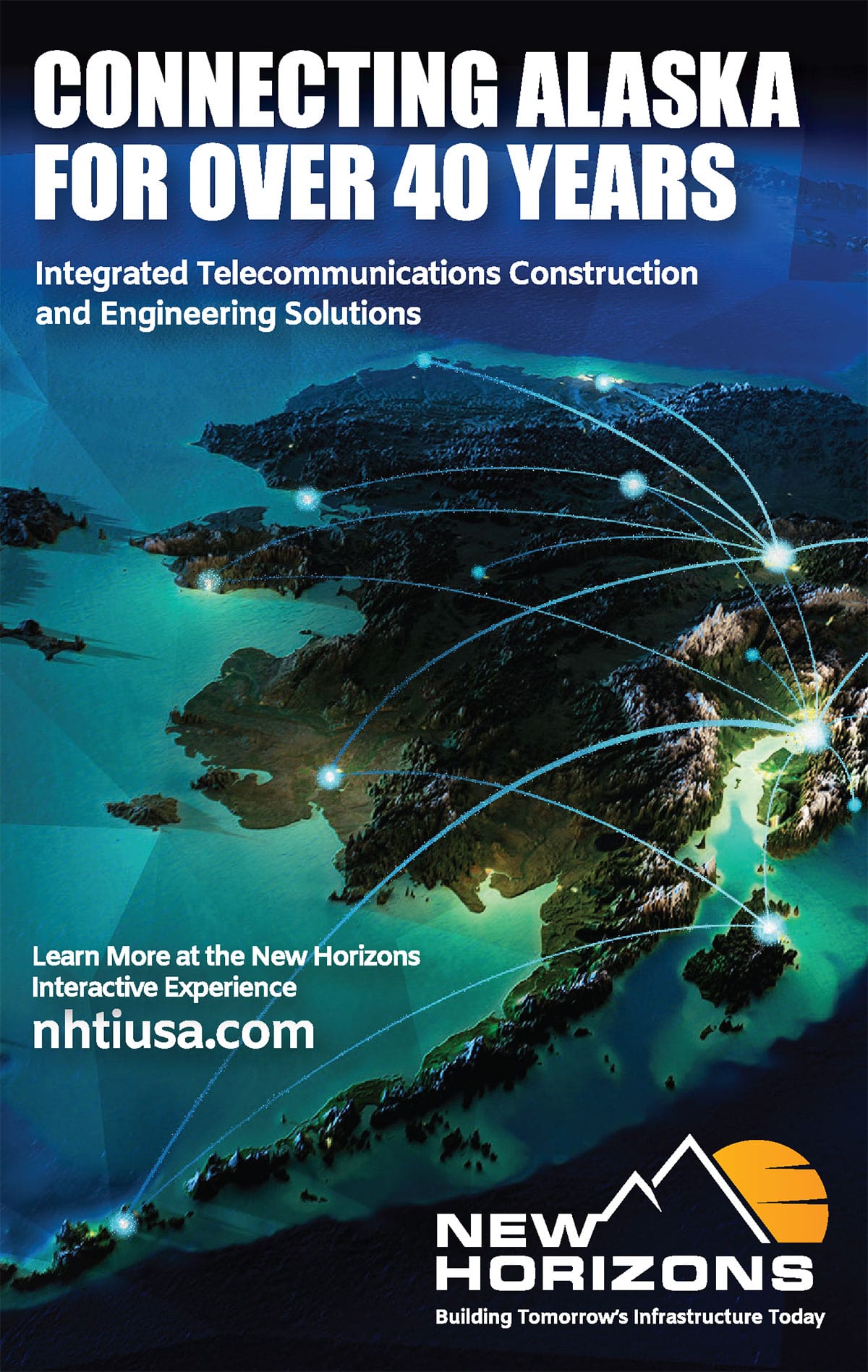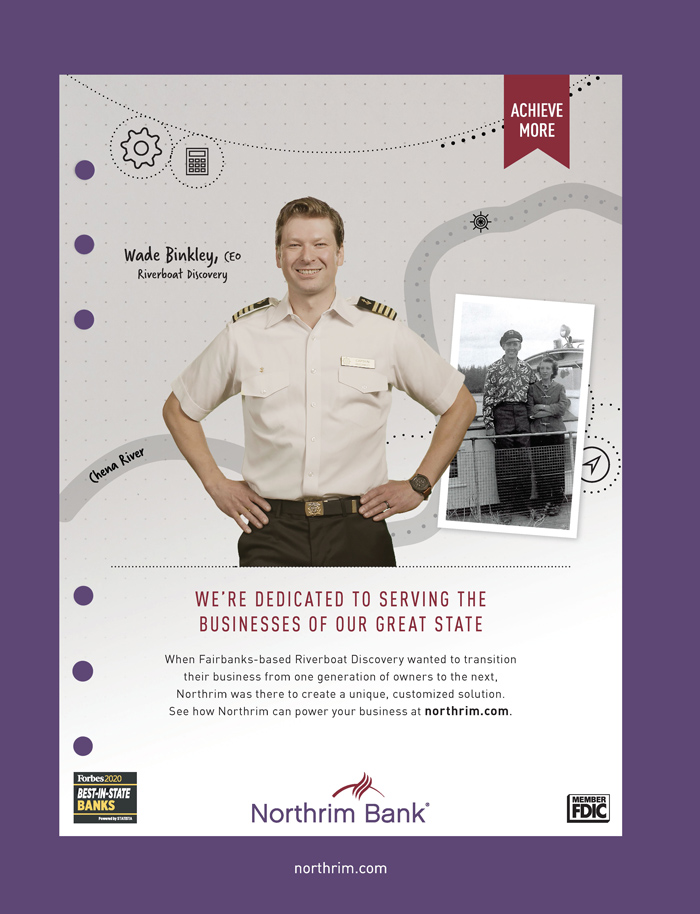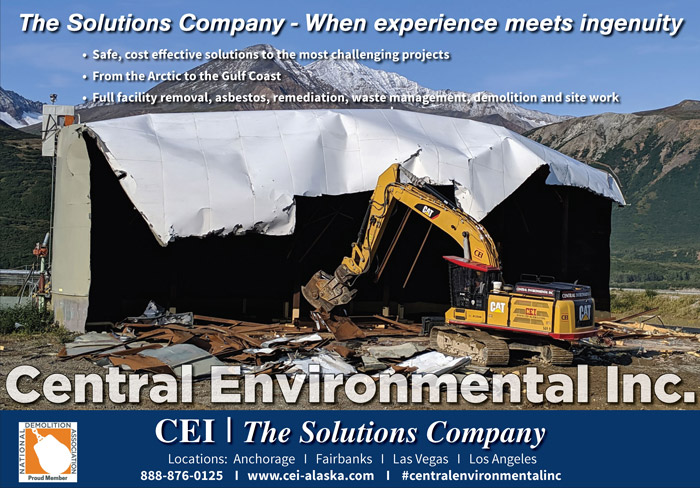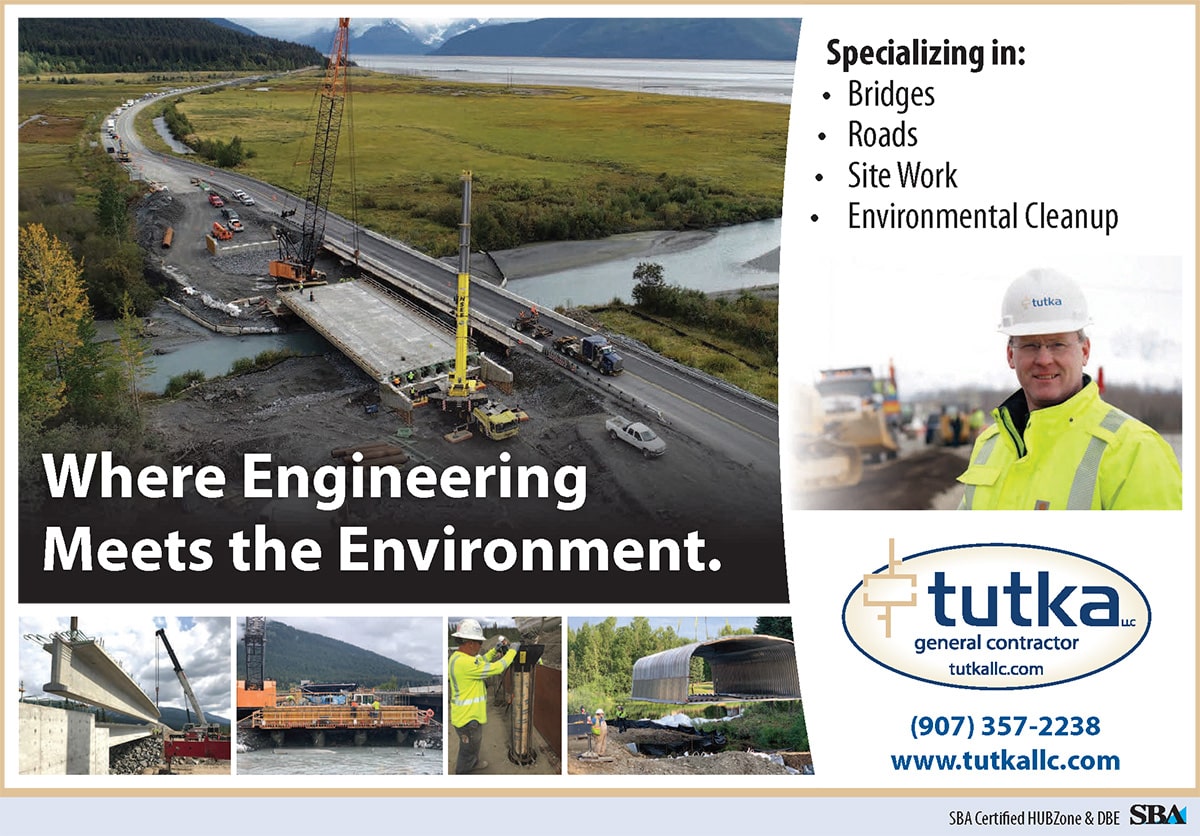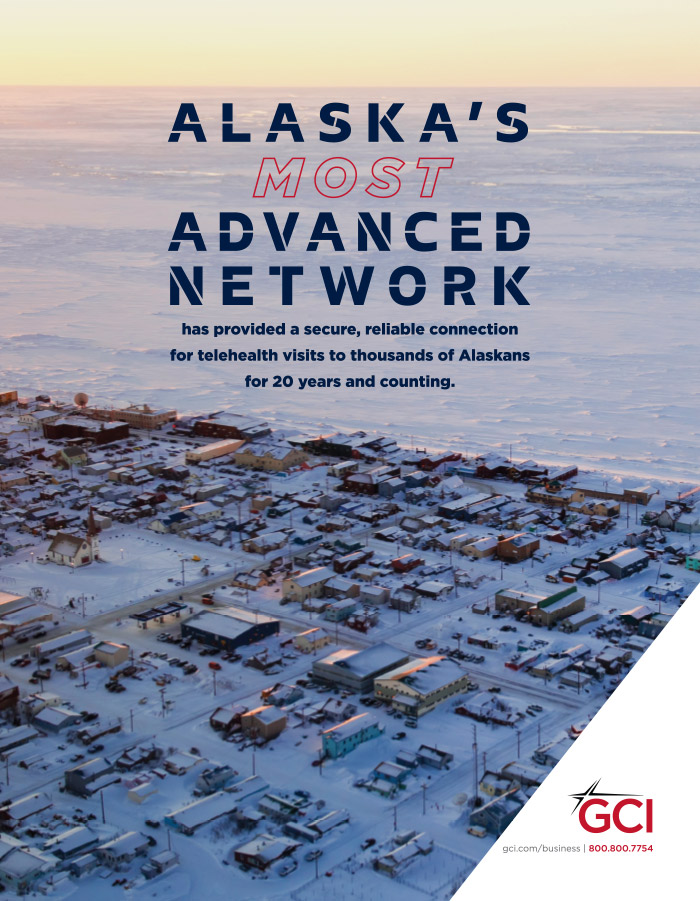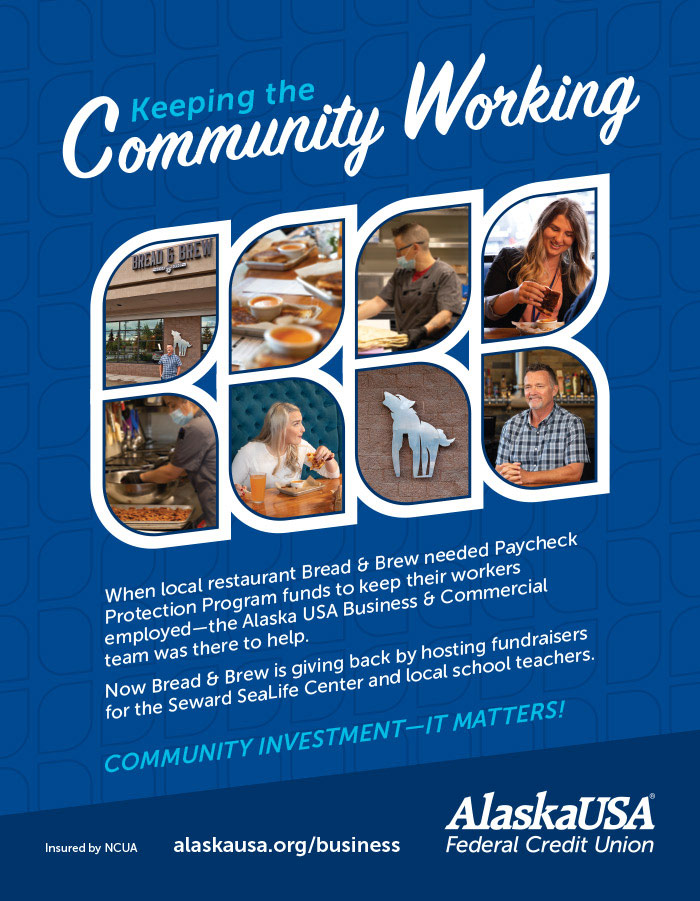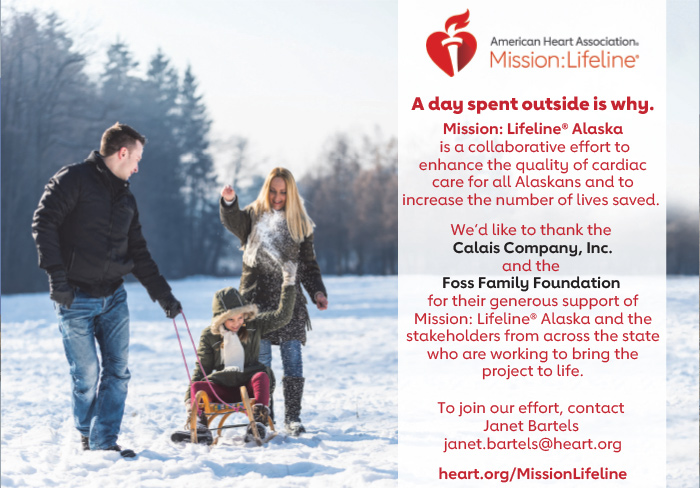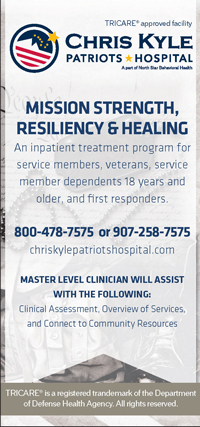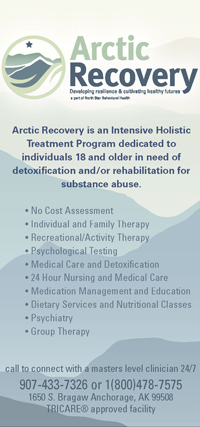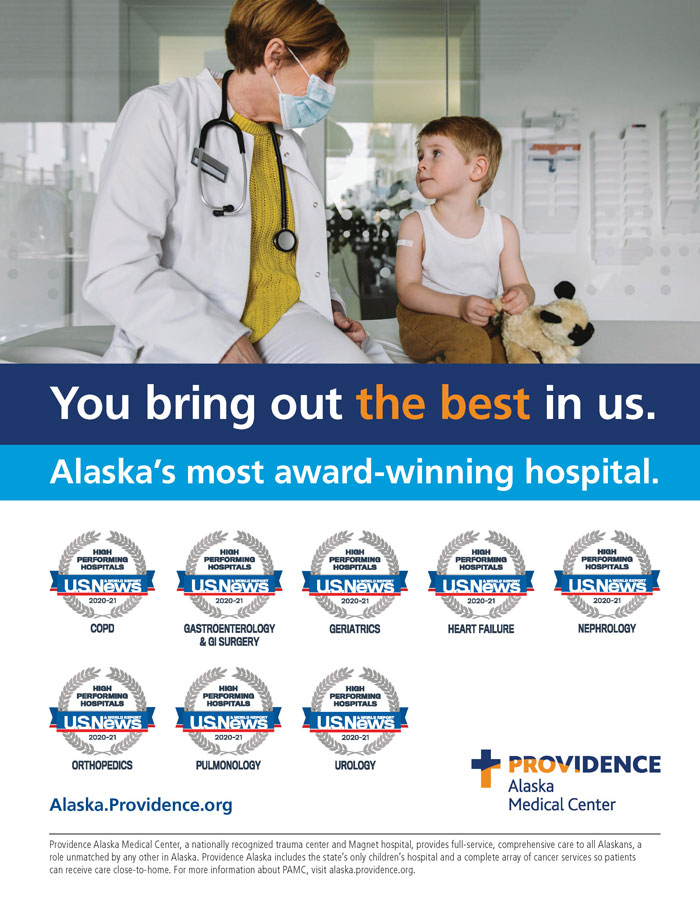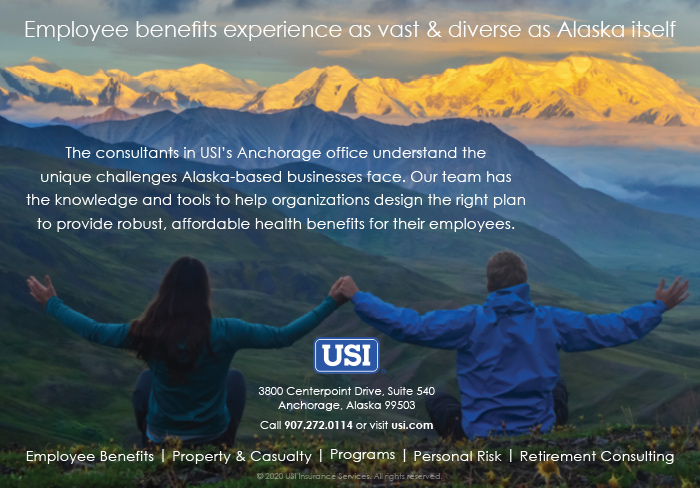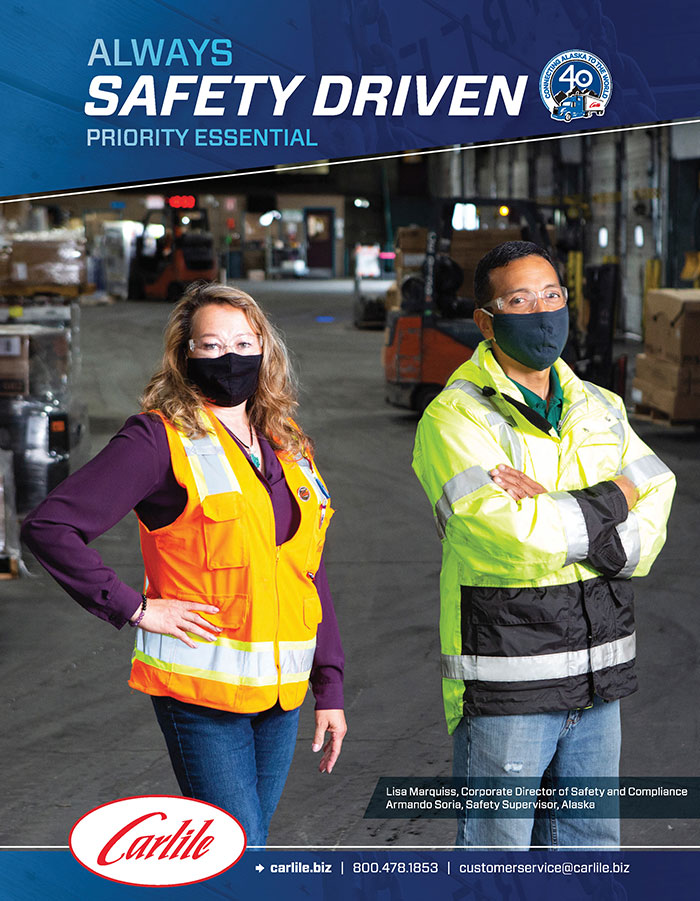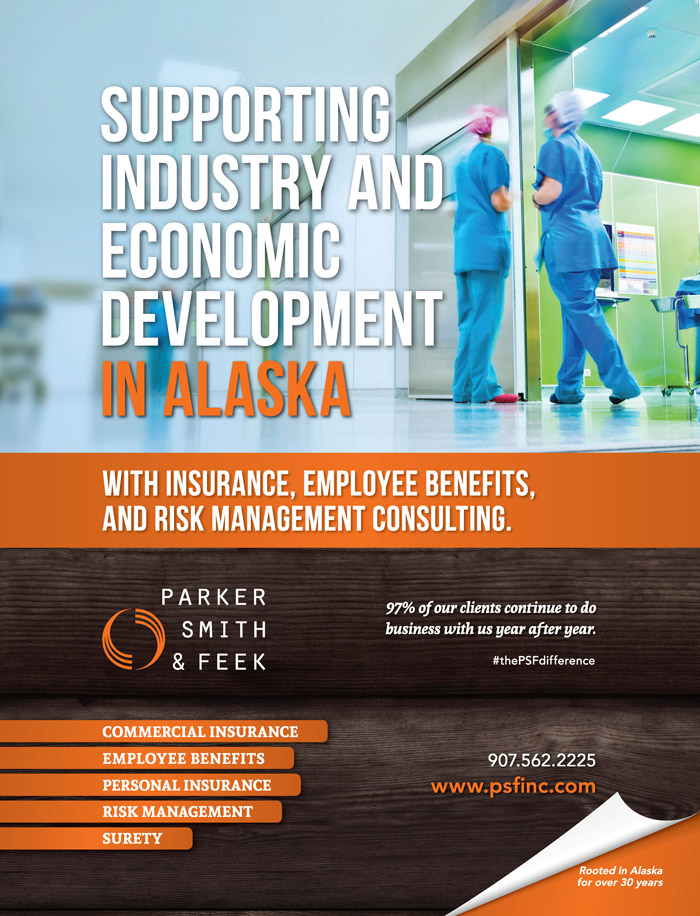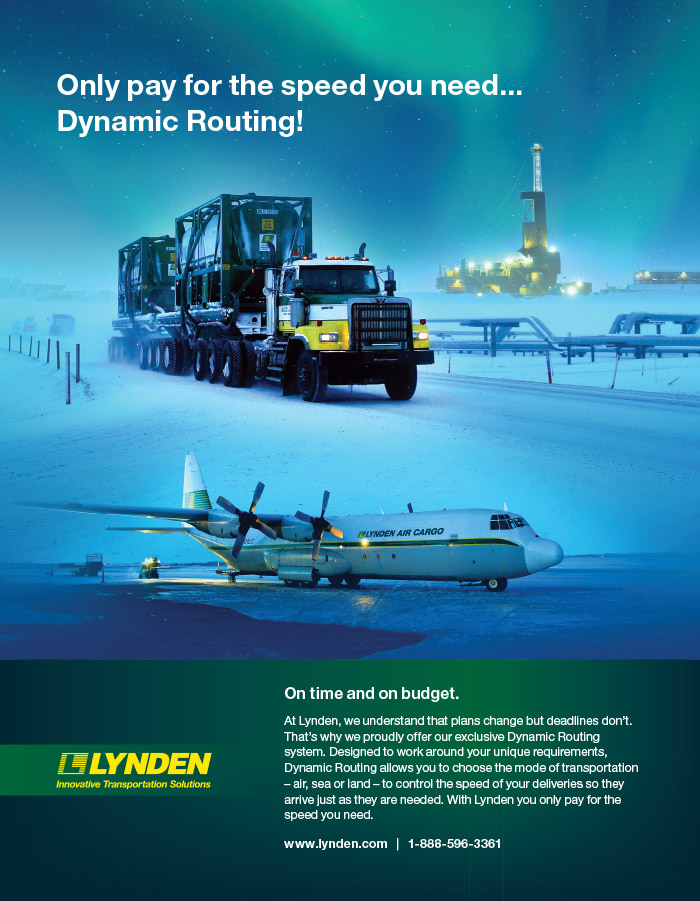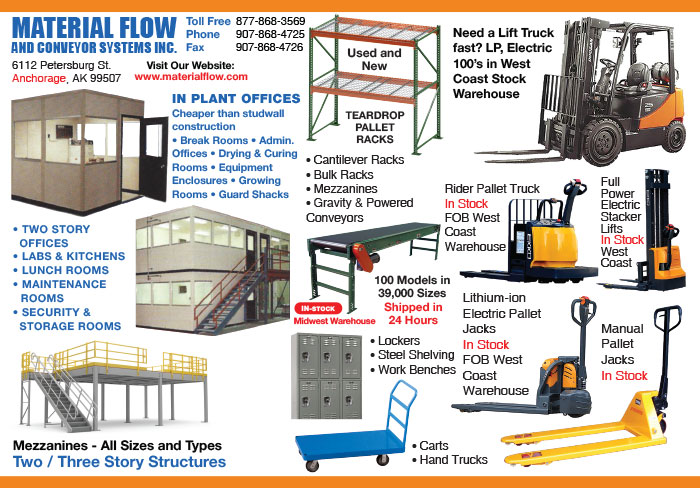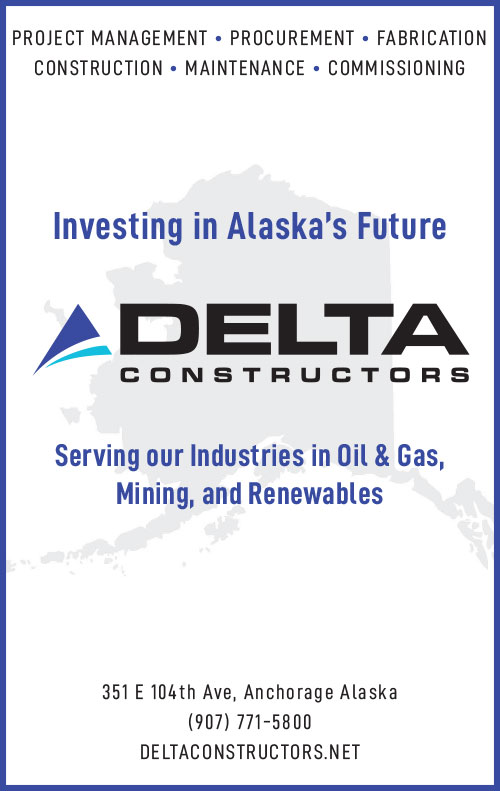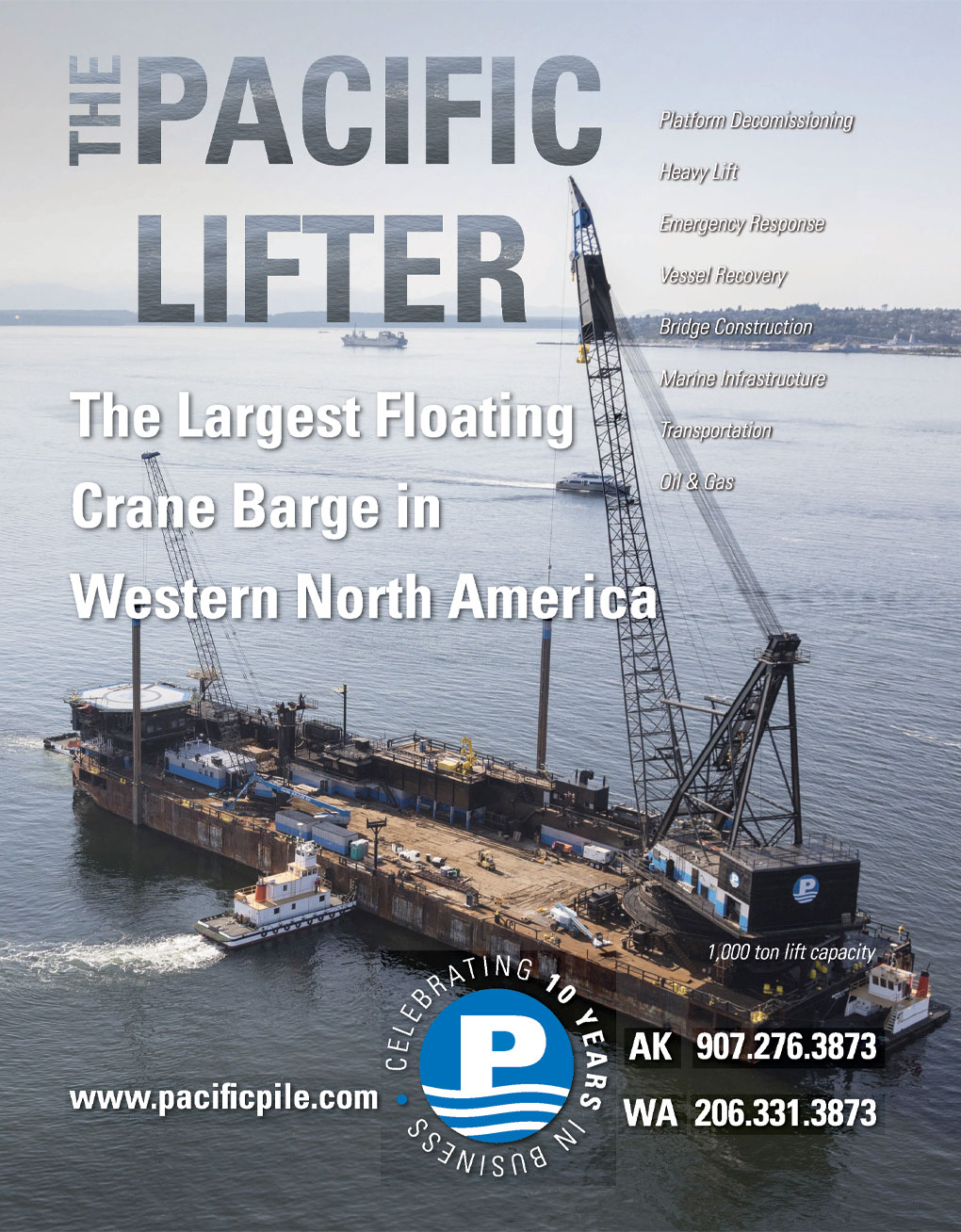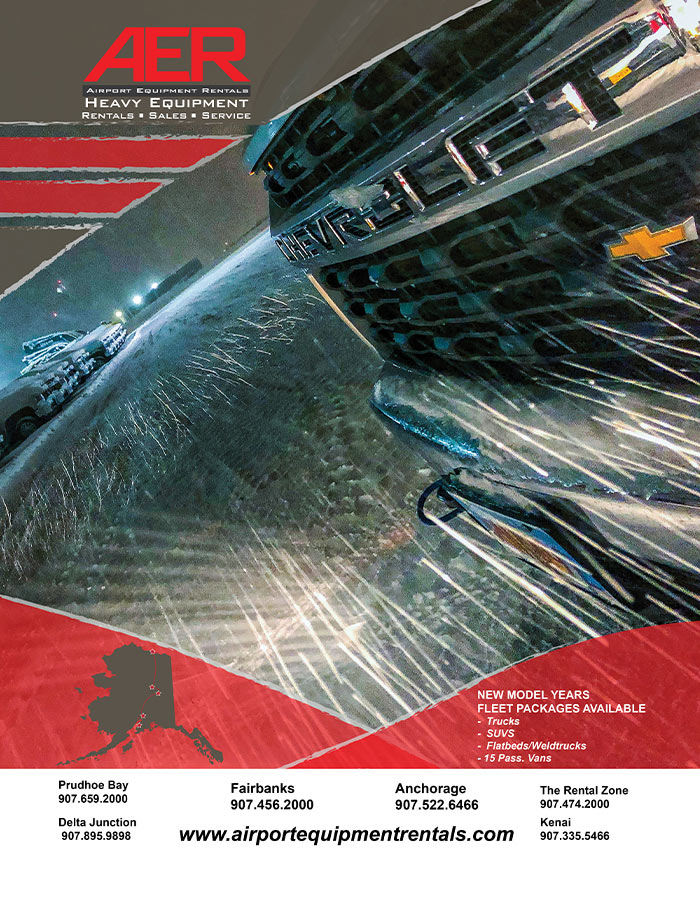Contents
Features
By Amy Newman
By Julie Stricker
By Isaac Stone Simonelli
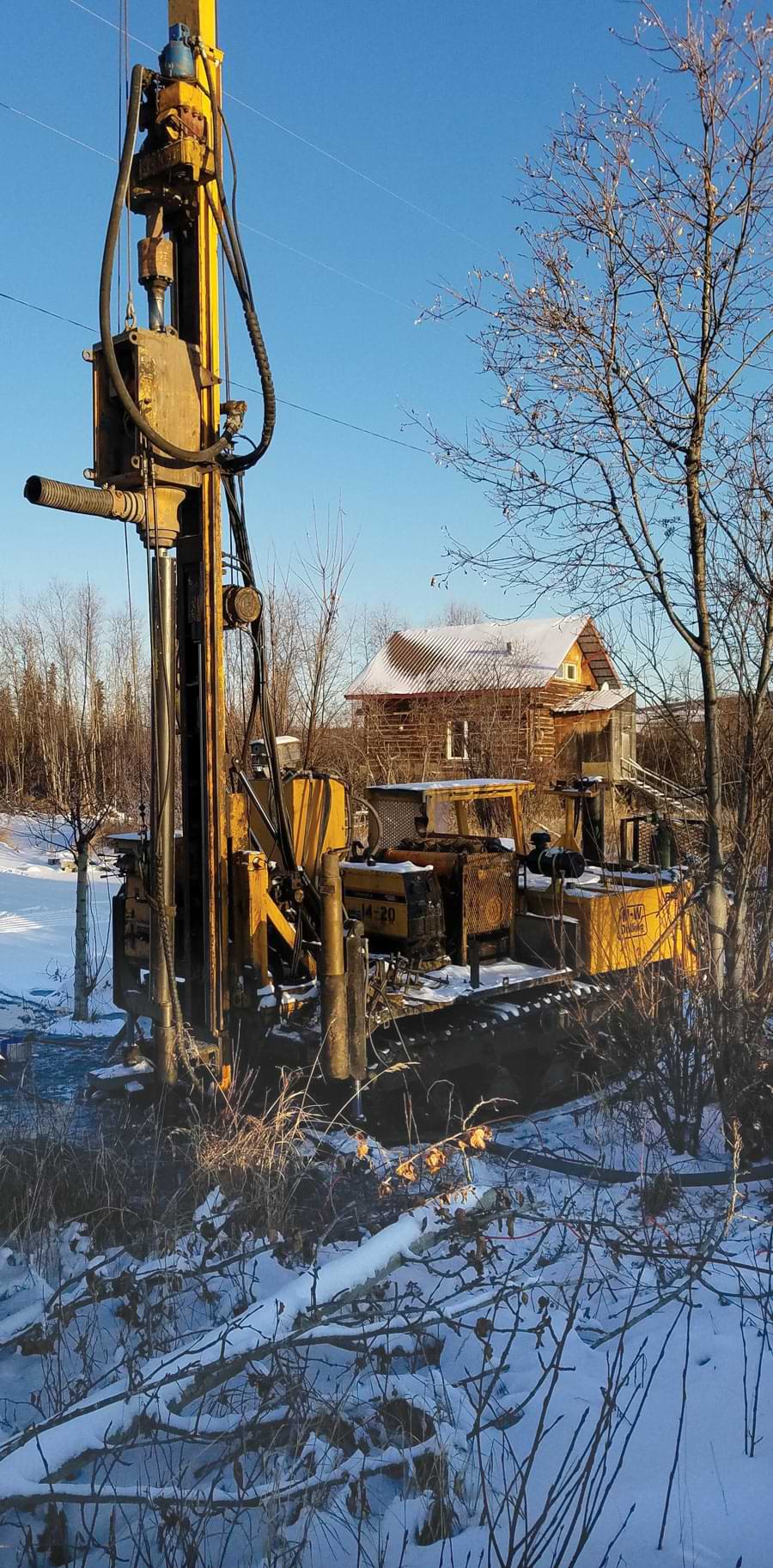
Waste Management in Rural Alaska
By Isaac Stone Simonelli
By Tracy Barbour
By Tracy Barbour
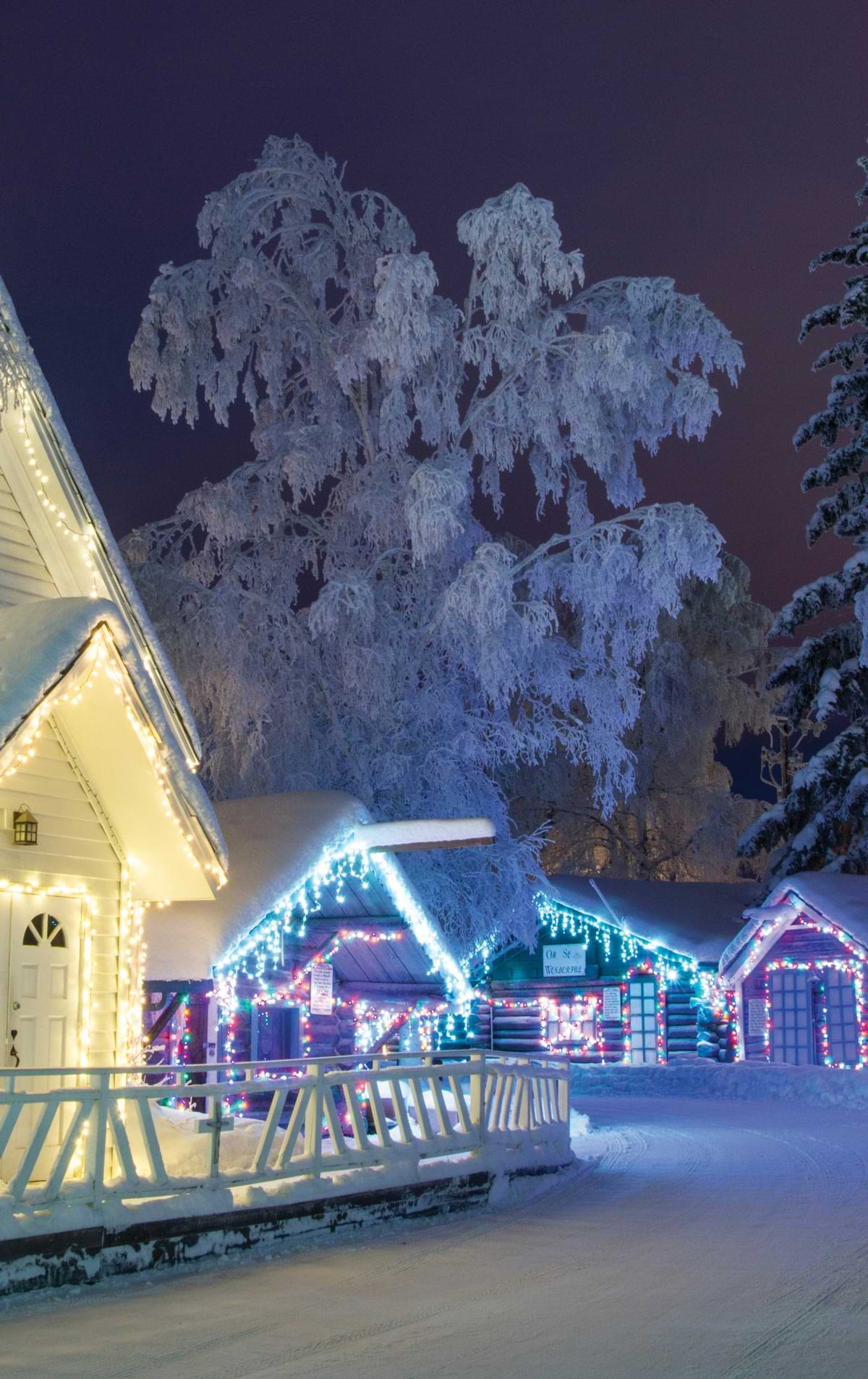
By Amy Newman
By Julie Stricker
By Isaac Stone Simonelli

Waste Management in Rural Alaska
By Isaac Stone Simonelli
Quick Reads
By Isaac Stone Simonelli
By Vanessa Orr
By Amy Newman
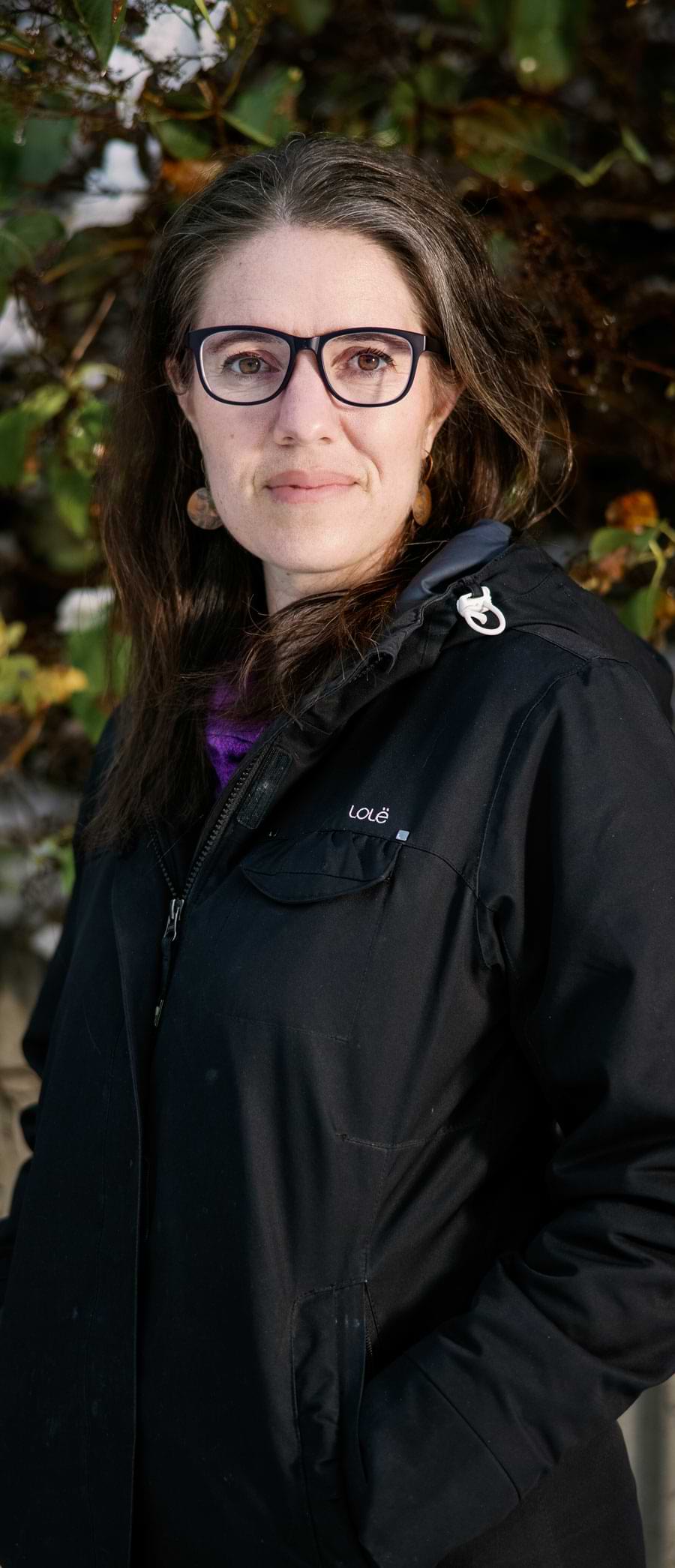
By Danny Kreilkamp
By Vanessa Orr
About The Cover
You might not recognize her without the mask, but the subject of our cover is the woman helping lead Alaska’s charge against COVID-19: Dr. Anne Zink.
Between live-streaming public health updates from her home office, answering community questions in the Department of Health and Social Service’s ECHO series, and volunteering at Mat-Su Regional clinic— on top of her “normal” workload as the state’s Chief Medical Officer—the busiest person in town still managed to set aside some time to speak with Alaska Business. Zink’s diagnosis on the current condition of Alaska’s healthcare system can be found in our cover story, “What’s Worked, What Hasn’t, and What’s Next.”
We’re grateful to Zink for being so accommodating and allowing us to feature her in our annual healthcare special section. We couldn’t have asked for a better figure to represent the efforts of healthcare workers across the state. With social-distancing measures solidly in place, our photographer shot the DHSS honcho outside her home—a yurt in the Mat-Su Valley.
Photograph by Kerry Tasker
By Vanessa Orr
By Isaac Stone Simonelli
By Vanessa Orr
By Amy Newman

By Danny Kreilkamp
About The Cover
You might not recognize her without the mask, but the subject of our cover is the woman helping lead Alaska’s charge against COVID-19: Dr. Anne Zink.
Between live-streaming public health updates from her home office, answering community questions in the Department of Health and Social Service’s ECHO series, and volunteering at Mat-Su Regional clinic— on top of her “normal” workload as the state’s Chief Medical Officer—the busiest person in town still managed to set aside some time to speak with Alaska Business. Zink’s diagnosis on the current condition of Alaska’s healthcare system can be found in our cover story, “What’s Worked, What Hasn’t, and What’s Next.”
We’re grateful to Zink for being so accommodating and allowing us to feature her in our annual healthcare special section. We couldn’t have asked for a better figure to represent the efforts of healthcare workers across the state. With social-distancing measures solidly in place, our photographer shot the DHSS honcho outside her home—a yurt in the Mat-Su Valley.
Photograph by Kerry Tasker
From the Editor
Stronger Apart
hat a year, right? Last year around this time we were expecting an economic recovery just around the corner, in no small part due to an anticipated record-breaking year for tourism in Alaska. But even though the Lower 48 can sometimes feel like a world away, it’s not so far that the 49th State was spared the devastating effects of COVID-19.
As the year progressed, COVID-19 cases increased pretty steadily, causing often irreparable damage to lives and livelihoods for people of all ages across every industry in the state—but in particular for the tourism and hospitality industries. Leisure and hospitality saw job losses of more than 33 percent from September 2019 to September 2020 (that’s some 13,600 fewer jobs than during the same time period last year). The transportation, warehousing, and utilities sector had 6,000 fewer jobs, mainly in scheduled air transportation and scenic and sightseeing transportation, according to an Alaskanomics report from late October.

Kerry Tasker
Billie Martin
press@akbizmag.com
Postmaster:
Send address changes to
Alaska Business
501 W. Northern Lights Blvd. #100
Anchorage, AK 99503



liravega | iStock
Ask An Expert
Tax planning strategies for 2021
his was a year for the Alaska business community unlike any other. Business strategies changed and funds were borrowed or granted from multiple sources, meaning traditional expenses and revenues will likely be more complex than last April at tax time—especially given the recent tax law changes. There will presumably be a shift in how businesses in different industries are expected to file their 2020 tax returns, and this will call for a re-thinking of tax planning strategies.
In 2018, Congress passed legislation that has had a significant effect on business taxes, and this legislation will continue to impact companies reporting their 2020 taxes, according to Soldotna-based certified public accountant Joseph Moore. “A lower corporate income tax rate of 21 percent and a 20 percent deduction for pass-through entities are the most notable components of the new tax law that will affect 2020 taxes,” says Moore, a principal of Altman, Rogers & Co., Alaska’s largest locally-owned CPA firm. “Also, 100 percent deduction of eligible equipment purchases is in play for the 2020 tax year.”
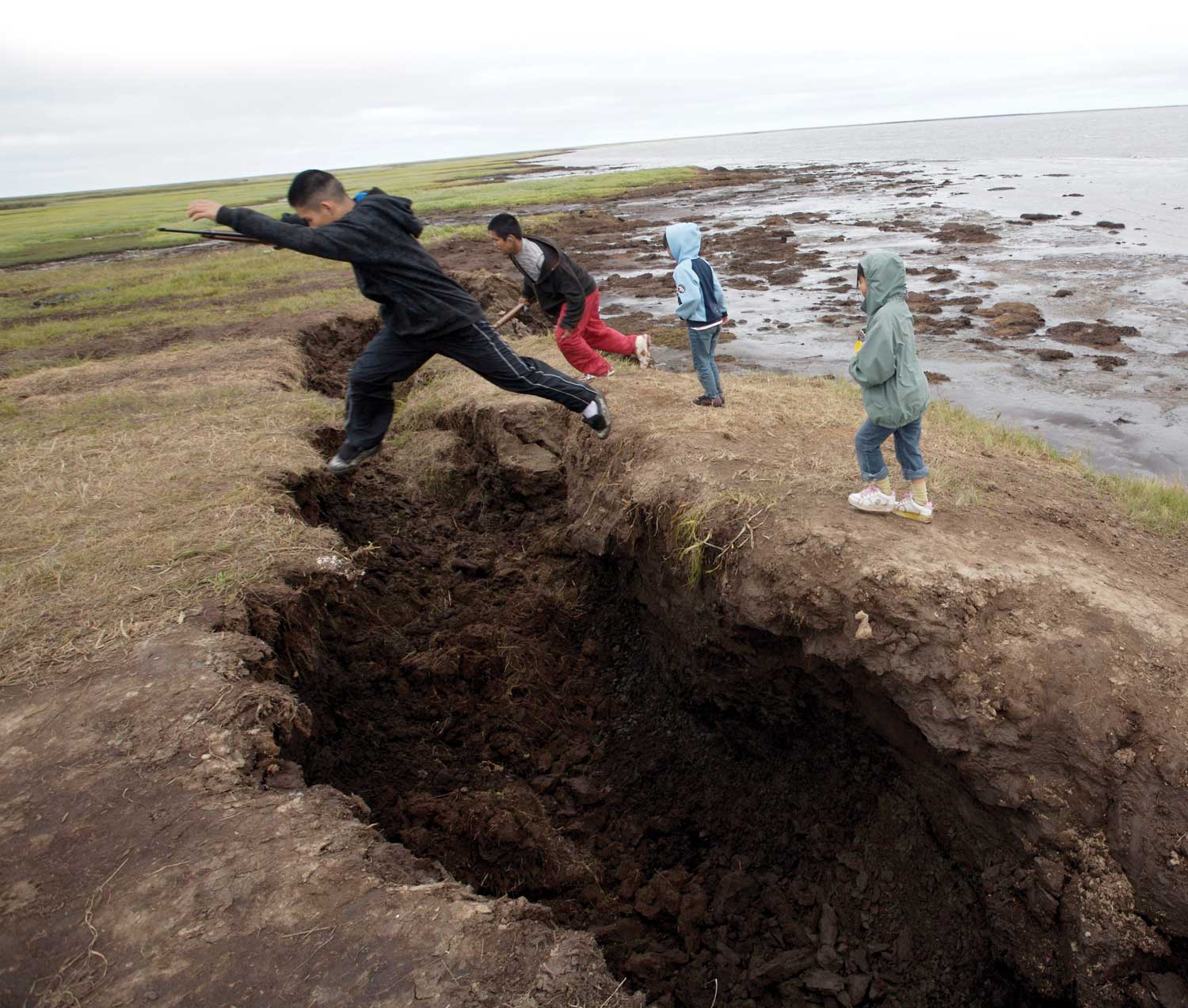
he rapidly warming climate is having negative impacts on rural communities in Alaska, where there are already significant barriers to creating the necessary infrastructure for solid waste and sewage management.
“Negative ‘norms’ have been occurring over decades in communities that still struggle with lack of basic sanitation services [in more than thirty villages in Alaska],” explains Jackie Qataliña Schaeffer, the senior project manager of Alaska Native Tribal Health Consortium’s (ANTHC) Division of Environmental Health and Engineering.

Senior Account Manager
kay, I get it. You are busy. You own a business and your days are filled with serving your customers; striving to keep them happy and coming back. You’re hard at work making sure your employees are productive and happy, and, of course, you’re focused on the bottom line. Where’s the time to even think about advertising?
First, take time to read that email from me— the one with something like “Advertising Opportunity in Alaska Business” in the subject line. Or open the one labeled “Alaska Business 2021 Media Kit Attached.”
his year has been devastating for Alaska’s tourism sector, which experienced a slump in visitor numbers, substantial revenue losses, and other impacts dispensed by the COVID-19 pandemic. But what does that mean for the future of the state’s visitor industry? To address this and other important questions, visitor bureaus statewide shared their insights on Alaska’s tourism sector.
The Alaska Travel Industry Association (ATIA) is hopeful about tourism’s prospects for 2021. Improvements in rapid testing capability—and hopefully a vaccine—will go a long way toward supporting prospective travelers’ decisions to visit Alaska, says ATIA President and CEO Sarah Leonard. “ATIA has also developed industry protocols for safe business operations for tourism businesses and is promoting Alaska’s wide-open spaces as a safe travel destination,” she says. “While funding is limited, ATIA will continue to keep Alaska’s brand in the travel marketplace to encourage potential travelers to keep Alaska top of mind.”
hough its largest city lagged behind, Alaska as a whole saw modest job growth in 2019, marking an emergence from a recession that started in 2014. Economists were cautiously optimistic in their predictions for what 2020 would hold for the state’s economy. What none of them saw coming—what nobody saw coming—was the COVID-19 pandemic and the crippling economic damage it would cause.
“The entire world lost GDP, so here in Alaska it’s estimated that we lost about 7 percent of our GDP from 2019, or about $4 billion,” Governor Mike Dunleavy says.
The pandemic also resulted in significant job loss. There were 37,600 fewer jobs in September 2020 than September 2019, says Mouhcine Guettabi, an associate professor of economics at the Institute of Social and Economic Research (ISER).
What Hasn’t,
and What’s Next
he novel coronavirus pandemic has demanded that healthcare professionals worldwide take a long, hard look at the way their systems are facilitating or hindering their ability to deliver care. For Alaska’s Chief Medical Officer, this period has been an exercise in making the most of the state’s available resources.
When preparations were being made at the beginning of the year, Dr. Anne Zink was focused on two areas where Alaska appeared short-staffed.
“I was particularly concerned about our ICU capacity: nurses, respiratory therapists, ICU doctors, and technicians in that space,” says Zink. “Early on in the pandemic, there was a big emphasis on intubating people quickly. There was a lot of talk about ventilators and the amount of supplies, and that really requires a very subspecialized group of personnel to make sure you can run those machines well.”
Advanced technology requiring specialized care was the other area in which Zink felt Alaska was ill-equipped. Extracorporeal membrane oxygenation, or ECMO, is one example of a technology that has proved useful in combatting COVID-19 but which the state simply doesn’t possess the means to employ.
A process like ECMO requires the expertise of cardiothoracic surgeons, which Zink says have proved difficult to attract. “You just can’t recruit people to work in the state to do that, and you need a whole team to be able to pull that off. Something like that is a 5- to 10-year process to build up.”
COVID-19
hen the COVID-19 pandemic first began, cities and states across the nation were scrambling for everything from information and general guidance to personal protective equipment and testing kits. As it continues to spread, more and more importance has been placed on testing as a way to both identify those with COVID-19 and to begin the contact tracing process.
Despite its size and the fact that many cities and villages are in remote locations, Alaska has excelled at implementing a testing protocol and making it accessible to the public. There are 175 testing offices throughout the state—from single sites in villages such as Ninilchik, Elim, and Unalakleet to roughly two dozen sites within the city of Anchorage. Working together, everyone from the Department of Health & Social Services (DHSS) to municipalities, tribal health services, hospitals, and drug stores have stepped in to make sure that testing is easy and available to those who need it.

y late-October, more than 11,600 Alaska residents had tested positive for COVID-19, and the numbers were steadily increasing. Because the virus is so highly communicable, there’s a good chance that those who were infected passed it onto others, who may or may not be symptomatic. Those people, in turn, could be passing it on to more people and so on—making it an extremely difficult virus to contain.
To identify potential carriers and slow the spread, the state, working with a number of different partners, instituted a COVID-19-specific contact tracing program to help identify positive cases and get them into isolation, as well as reach out to close contacts of those patients to educate them about the quarantining process.

s scientists and medical experts work to develop a COVID-19 vaccine, the conversation has grown to include not just the safety and efficacy of a potential vaccine but the logistics surrounding its distribution as well.
Getting vaccines from the manufacturer and into the hands of vaccine providers in Alaska requires a coordinated, collaborative effort among partners in both the public and private sectors. Alaska’s COVID-19 response effort is spearheaded by the Department of Military and Veterans Affairs, the Department of Public Safety, and the Department of Health & Social Services (DHSS), along with the COVID-19 Vaccine Task Force, says Military and Veterans Affairs Incident Commander Bryan Fisher.
This collaboration and coordination are important given that the details of rolling out a COVID-19 vaccine are being developed simultaneously with the vaccine itself. Because it is currently unknown exactly when a vaccine will be available or how much will be distributed to each state, Alaska must prepare for several different distribution scenarios.
“Initially, states were told to have plans in place for October 2020, and then further information was provided that suggested that limited COVID-19 vaccine doses may be available early in November of 2020 and that the vaccine supply will increase substantially in early 2021,” said Sondra LeClair, emergency program manager with the Division of Public Health Rural and Community Health Systems Bureau, during a September COVID-19 Vaccine ECHO (a videoconference connecting Alaska’s COVID-19 experts with specific audiences about specific topics). “That is the limitation of the information that’s been given about timeline.”


hether on the North Slope or a rig in Cook Inlet, working in Alaska’s oil and gas industry is a high-risk endeavor. The state’s largest remote workforce faces dozens of potential dangers every day: explosions and fires, confined spaces, exposure to hazardous chemicals, the potential for slips and falls… the list is long. And compounding these dangers are frigid temperatures, whiteout conditions, daylong darkness, and even the occasional wandering polar bear.
So, it’s not hyperbole to say that one of the oil and gas industry’s top priorities is protecting the health and safety of both its employees and the environment by implementing safety protocols that minimize the risks and help mitigate damage should an incident occur. Engaging the help of health, safety, and environment (HSE) specialists is a critical part of creating and implementing effective safety protocols.
with Cargo
or several days last spring, Anchorage Ted Stevens International Airport was the busiest airport in the world.
Those days are outliers, a result of global shutdowns related to the COVID-19 pandemic, but they are an indication of the importance of cargo transportation in Alaska, according to Jim Szczesniak, airport manager.
“We are currently ranked number six in the world for cargo operations,” Szczesniak said in October. About 2.8 million tons of cargo passes through the airport each year. This year, the coronavirus pandemic increased that number, he says.
Connected
he Internet of Things (IoT) is rapidly evolving and becoming a standard part of new commercial and residential buildings. Property owners and managers have integrated more and more technology directly into commercial spaces to improve workplace environments and increase efficiencies, as well as collect highly valuable data that allows them to make better choices.
IoT is the next evolution of smart buildings, allowing smart devices and sensors to communicate through an online system, explains Siemens Industry General Manager for Alaska and Hawaii Dan Hart, though the modern concept of a smart building started gaining traction in the ‘90s.
Acting Mayor Austin Quinn-Davidson has taken the mayoral oath of office, replacing Ethan Berkowitz, who has resigned. The oath was administered in the mayor’s office by Chief Magistrate Judge Deborah Smith. Quinn-Davidson will remain in the office until the next mayoral election in April 2021. Quinn-Davidson is an attorney who was first elected to the Anchorage Assembly in 2018. She is the first woman and first openly gay person to serve as mayor or acting mayor of Anchorage since the municipality was created in 1975.
muni.org
gulkanacouncil.org | alaska.gov
 512,771 barrels
512,771 barrels 4.6% change from previous month
4.6% change from previous monthSource: Alaska Department of Natural Resources
 $38.06 per barrel
$38.06 per barrel 1% change from previous month
1% change from previous monthSource: Alaska Department of Natural Resources
 333,004 Labor Force
333,004 Labor Force 7.2% Unemployment
7.2% UnemploymentSource: Alaska Department of Labor and Workforce Development
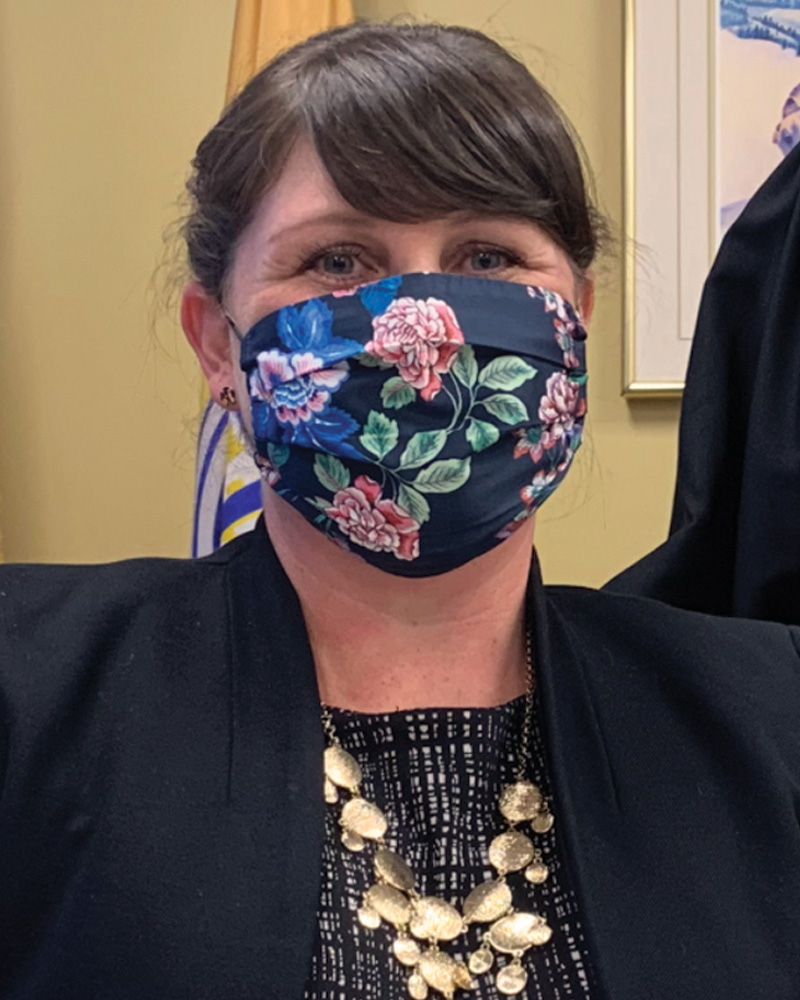
 Austin Quinn-Davidson is Anchorage’s Acting Mayor, replacing Ethan Berkowitz, who resigned; she was selected by the Anchorage Assembly.
Austin Quinn-Davidson is Anchorage’s Acting Mayor, replacing Ethan Berkowitz, who resigned; she was selected by the Anchorage Assembly.
Quinn-Davidson earned her bachelor’s from the University of California at Santa Barbara and a law degree from the University of California at Davis. As an attorney, she worked for a large law firm as in-house counsel to a bi- state government agency and as the legal affairs and land transactions director for the Great Land Trust.
Quinn-Davidson was first elected to represent West Anchorage on the Anchorage Assembly in 2018, where she prioritized investments in public safety, supporting working families, and securing disaster relief for Anchorage residents and businesses.
Alaska Trends
he impacts of COVID-19 on Alaska’s economy are myriad, and the combined action plans of federal and state governments in responding to the pandemic have been equally multifaceted. Loan forgiveness programs, relief activity, and early permanent fund dividend distribution are a few of the tactics that government officials employed to keep Alaska’s economy running.
Staying abreast of what’s happening during the pandemic—case numbers, statewide health mandates, unemployment statistics—is a daunting task. This month in Alaska Trends we provide an overview of a few key statistics and COVID-19 response efforts. While much of the information is unsettling, there are some positive spots to consider. For example, compared to the beginning of the pandemic, current unemployment numbers have almost been cut in half. And what we can’t see in this data is the incredibly hard work going on behind the scenes to both secure economic opportunities and safeguard the health of every Alaskan.
At a Glance
That’s Not How We Do It Here! by John Kotter and Holger Rathgeber.
What movie do you recommend to everyone you know?
The Blind Side.
What’s the first thing you do when you get home after a long day at work?
You know I saw this question and thought long and hard about telling the truth [she laughs]. But no, usually I come home and change clothes and sit and listen to music with my husband… with a glass of wine.
If you couldn’t live in Alaska, what’s your dream locale?
I don’t know if you’d call it a dream locale, but if I couldn’t live in Alaska I would probably live in Nashville with my kids.
If you could domesticate a wild animal, what animal would it be?
A porcupine. It’s kind of a joke but I get teased that I’m a lot like a porcupine… I’m a lawyer by trade and have to remember not to go into lawyer mode and be prickly.
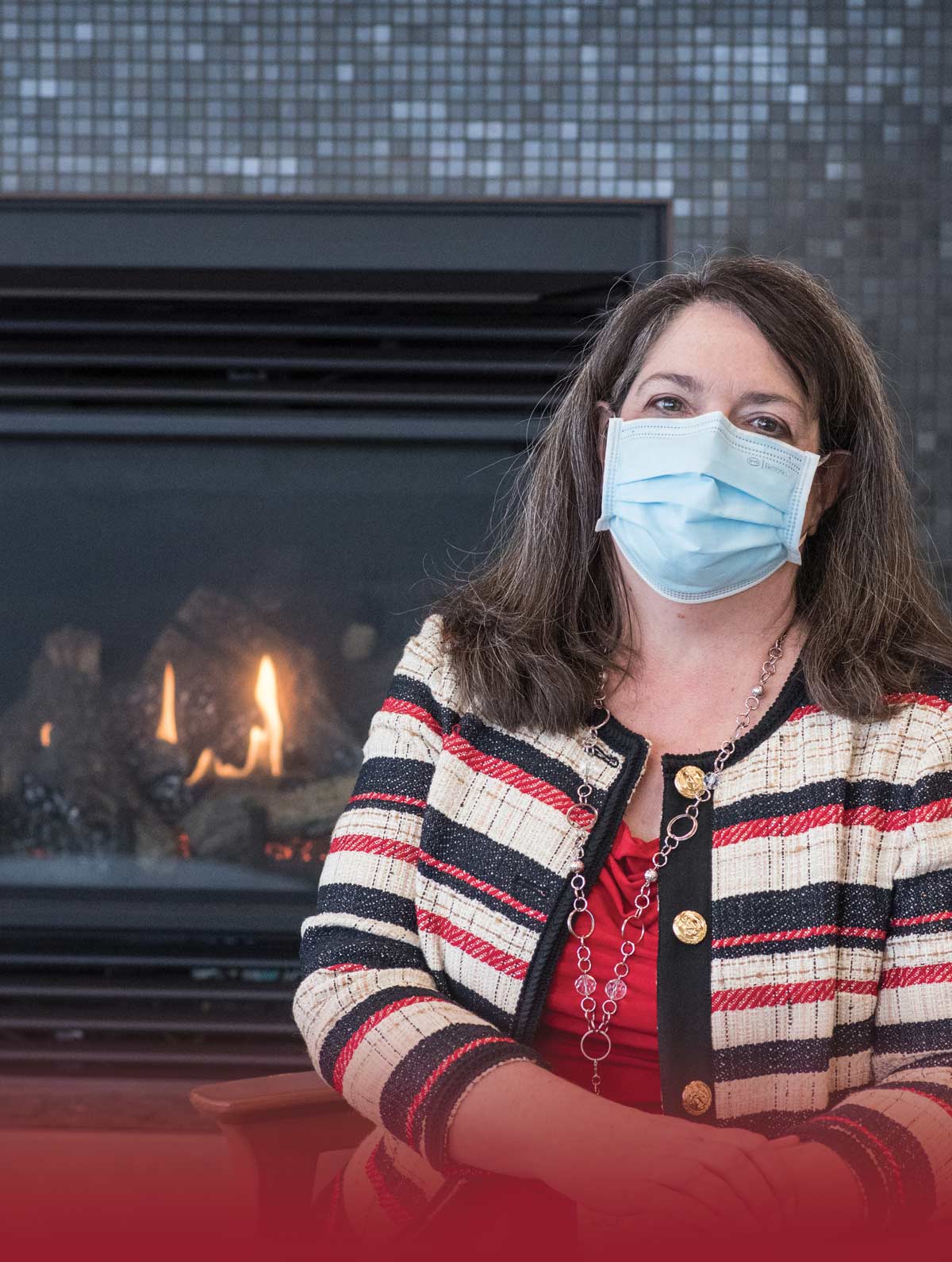
At a Glance
That’s Not How We Do It Here! by John Kotter and Holger Rathgeber.
What movie do you recommend to everyone you know?
The Blind Side.
What’s the first thing you do when you get home after a long day at work?
You know I saw this question and thought long and hard about telling the truth [she laughs]. But no, usually I come home and change clothes and sit and listen to music with my husband… with a glass of wine.
If you couldn’t live in Alaska, what’s your dream locale?
I don’t know if you’d call it a dream locale, but if I couldn’t live in Alaska I would probably live in Nashville with my kids.
If you could domesticate a wild animal, what animal would it be?
A porcupine. It’s kind of a joke but I get teased that I’m a lot like a porcupine… I’m a lawyer by trade and have to remember not to go into lawyer mode and be prickly.
Off the Cuff
helley Ebenal’s path to becoming the CEO for Foundation Health Partners, and the Executive Director and General Counsel for the Greater Fairbanks Community Hospital Foundation, wasn’t exactly conventional. Ebenal spent the majority of her career practicing law, but, following a random phone call from a past employer, she started mulling over a change of scenery: “Dan Winfrey called me out of the blue one day and said, ‘I’m up for the Alaska Supreme Court; if I get it, would you be interested in this job?’”
Luckily for residents of the Interior—she was.
Having joined the organization during a pivotal time following its decision to leave Banner Health, Ebenal feels a deep commitment to serving Foundation Health Partners and the city that raised her.





